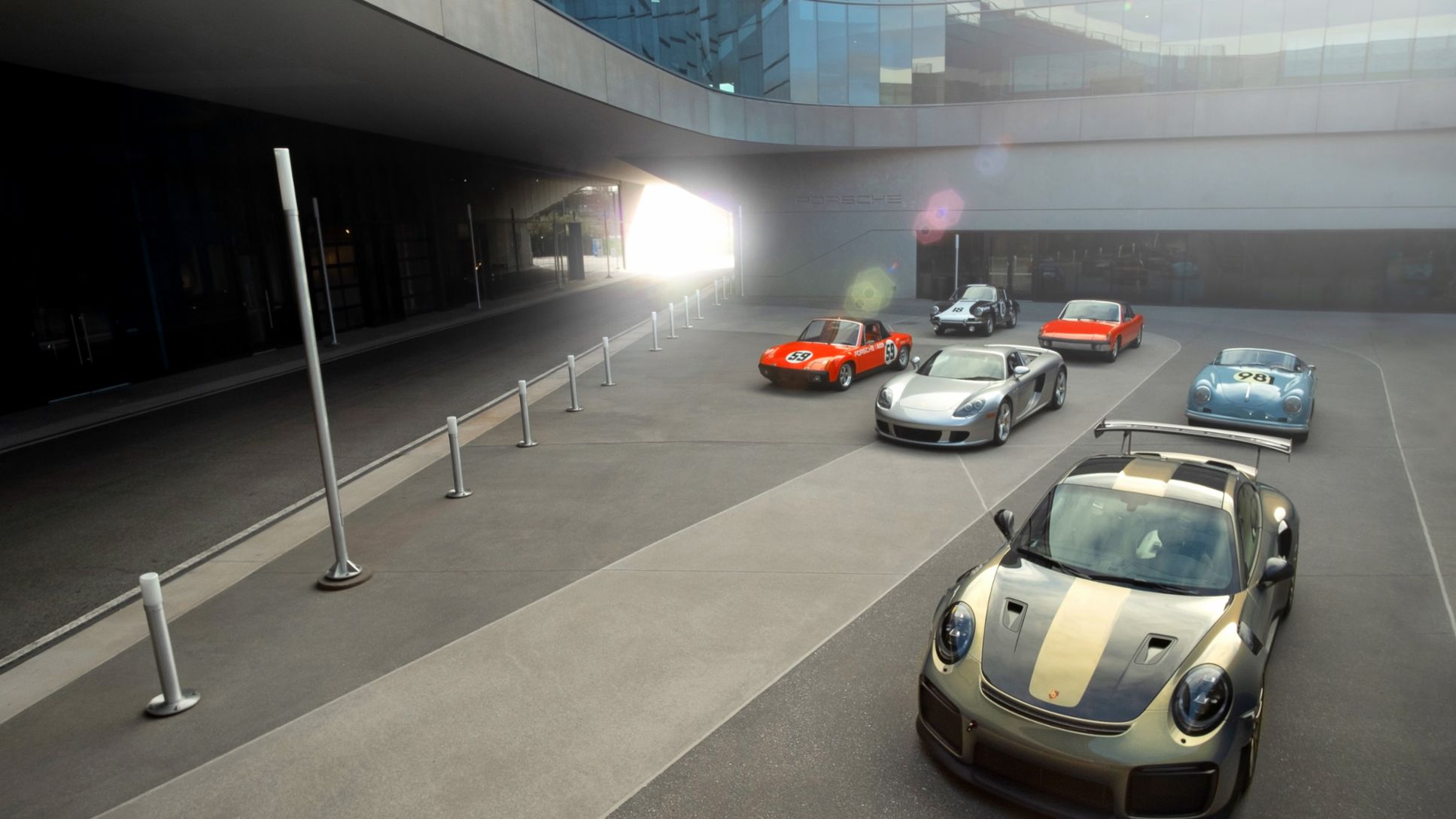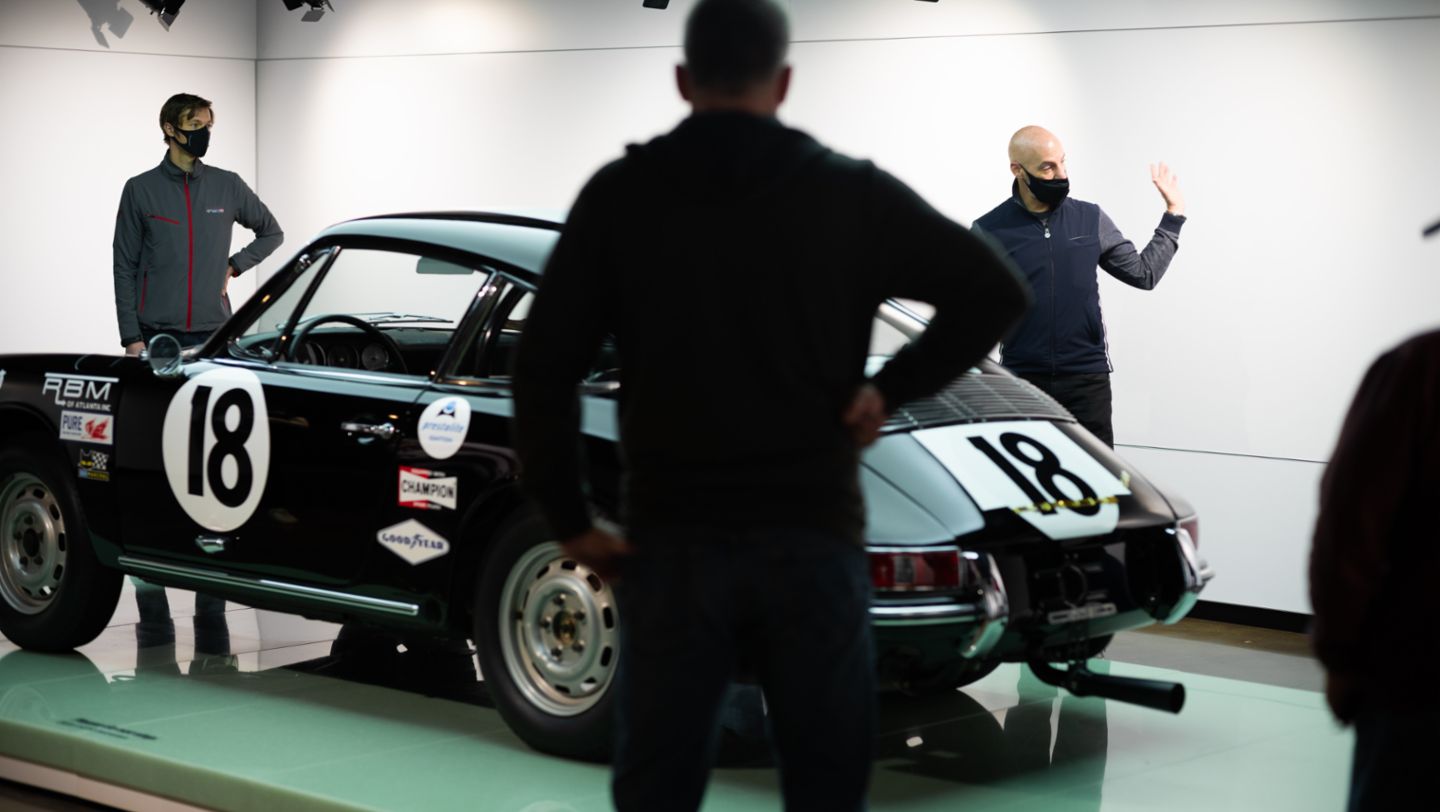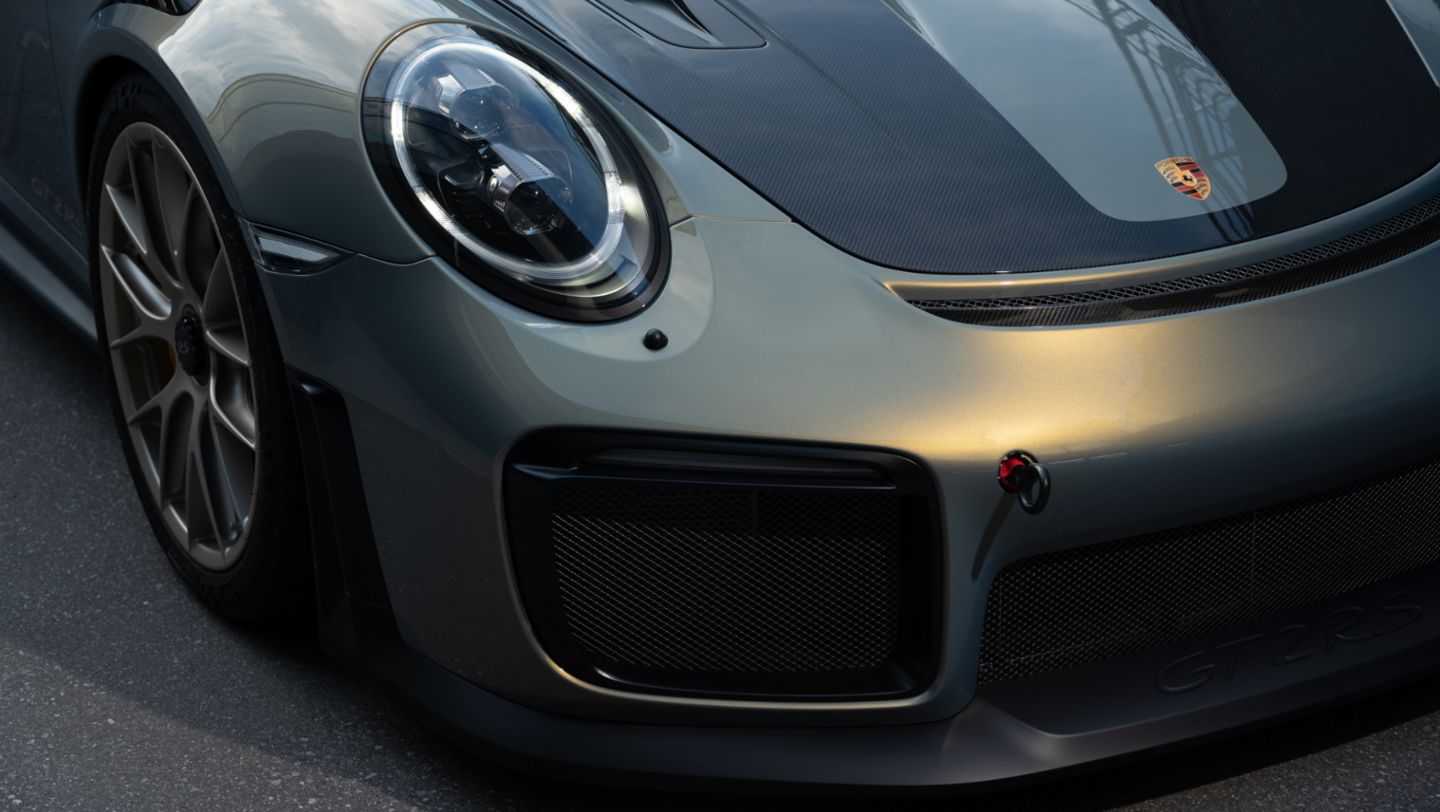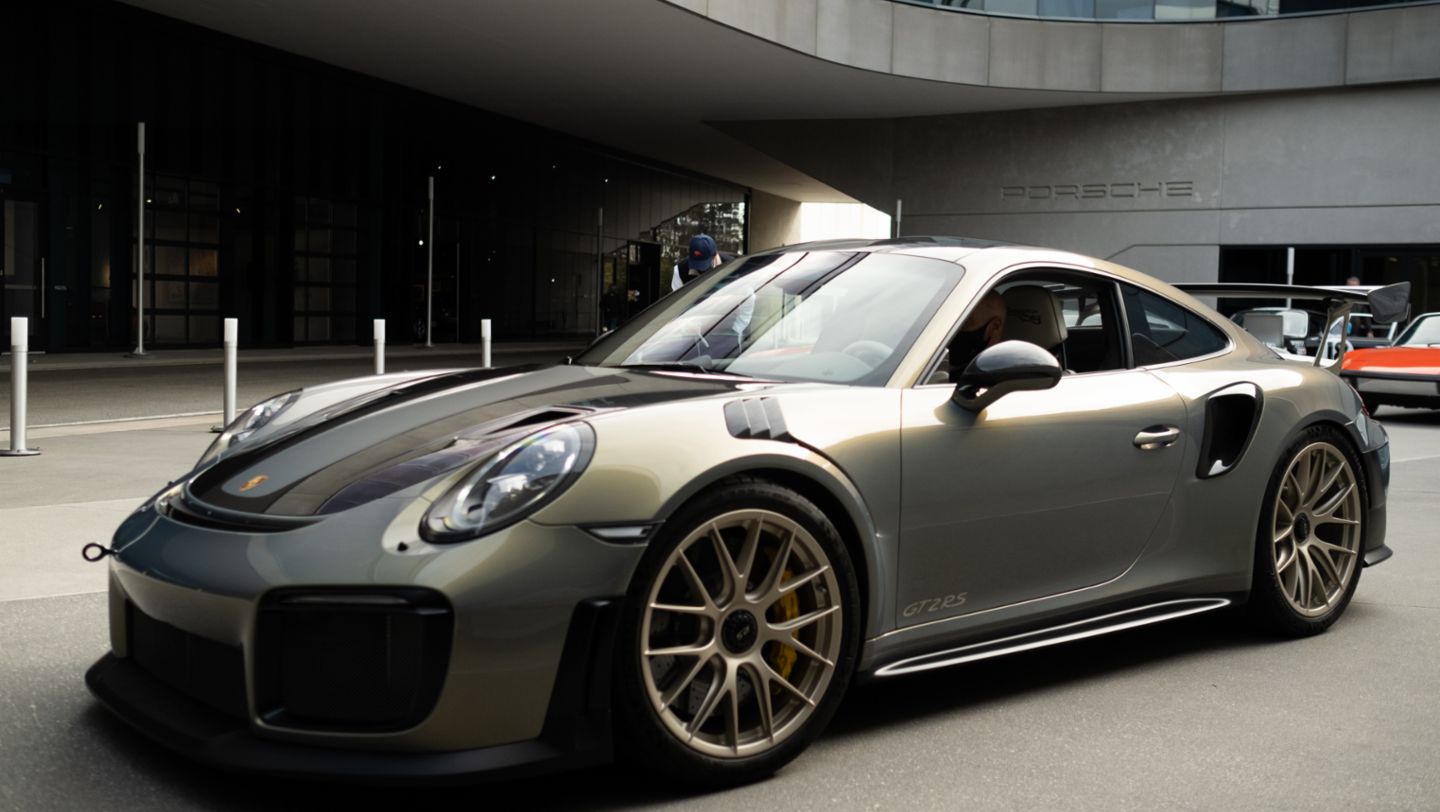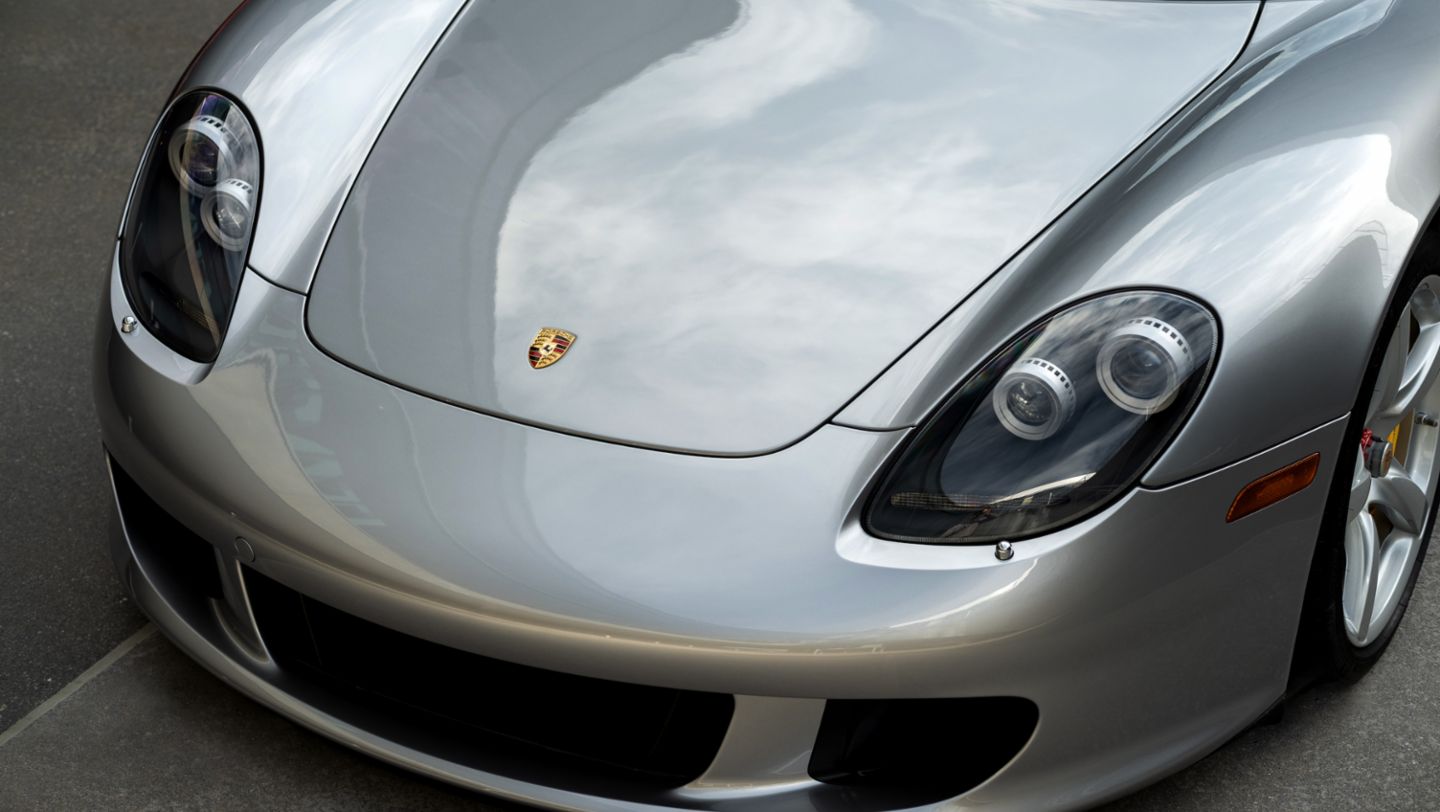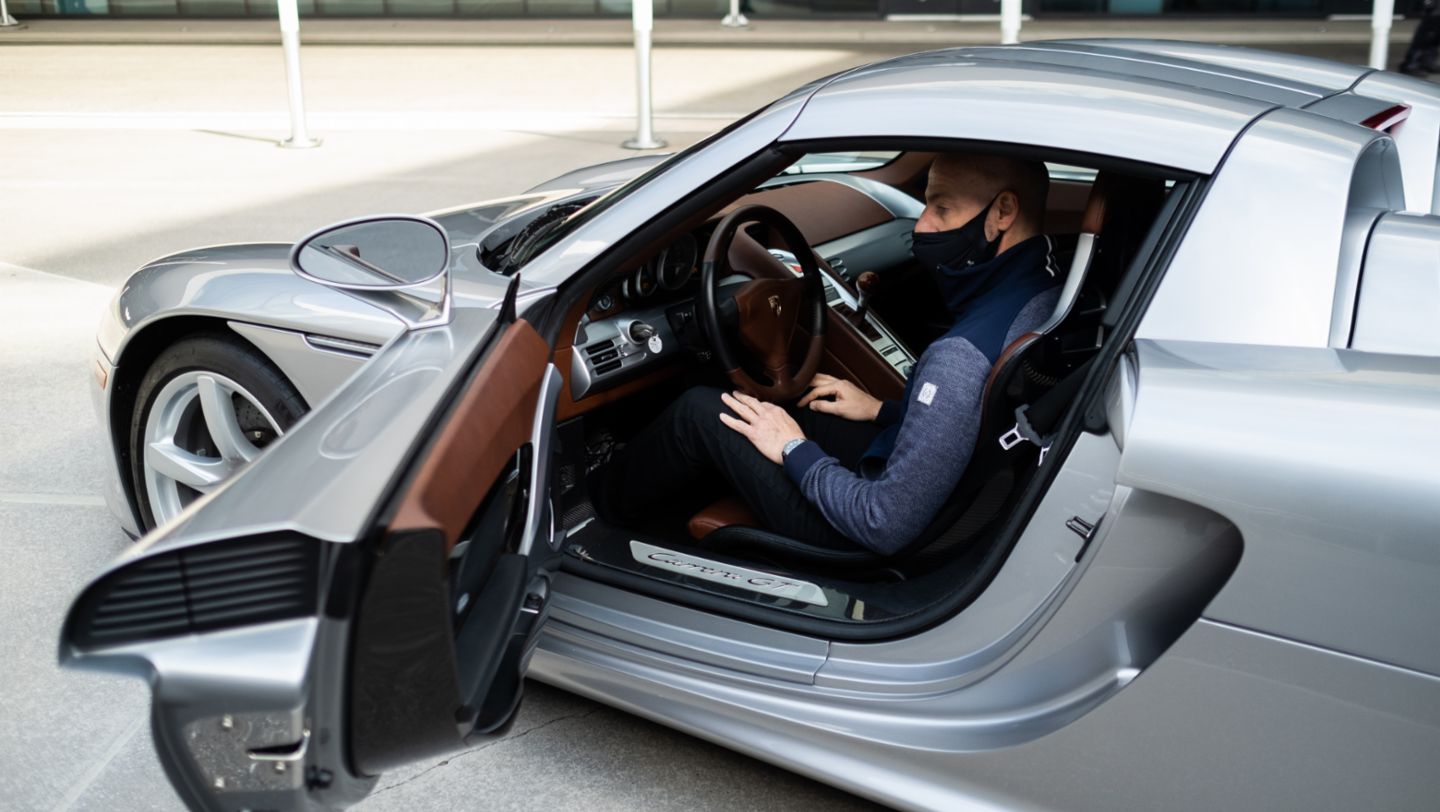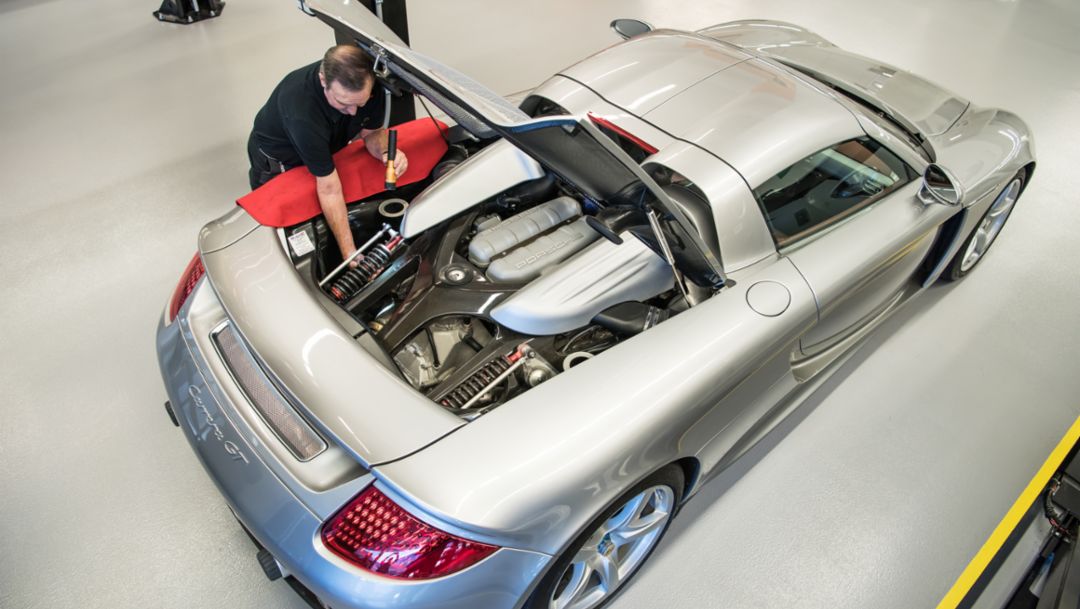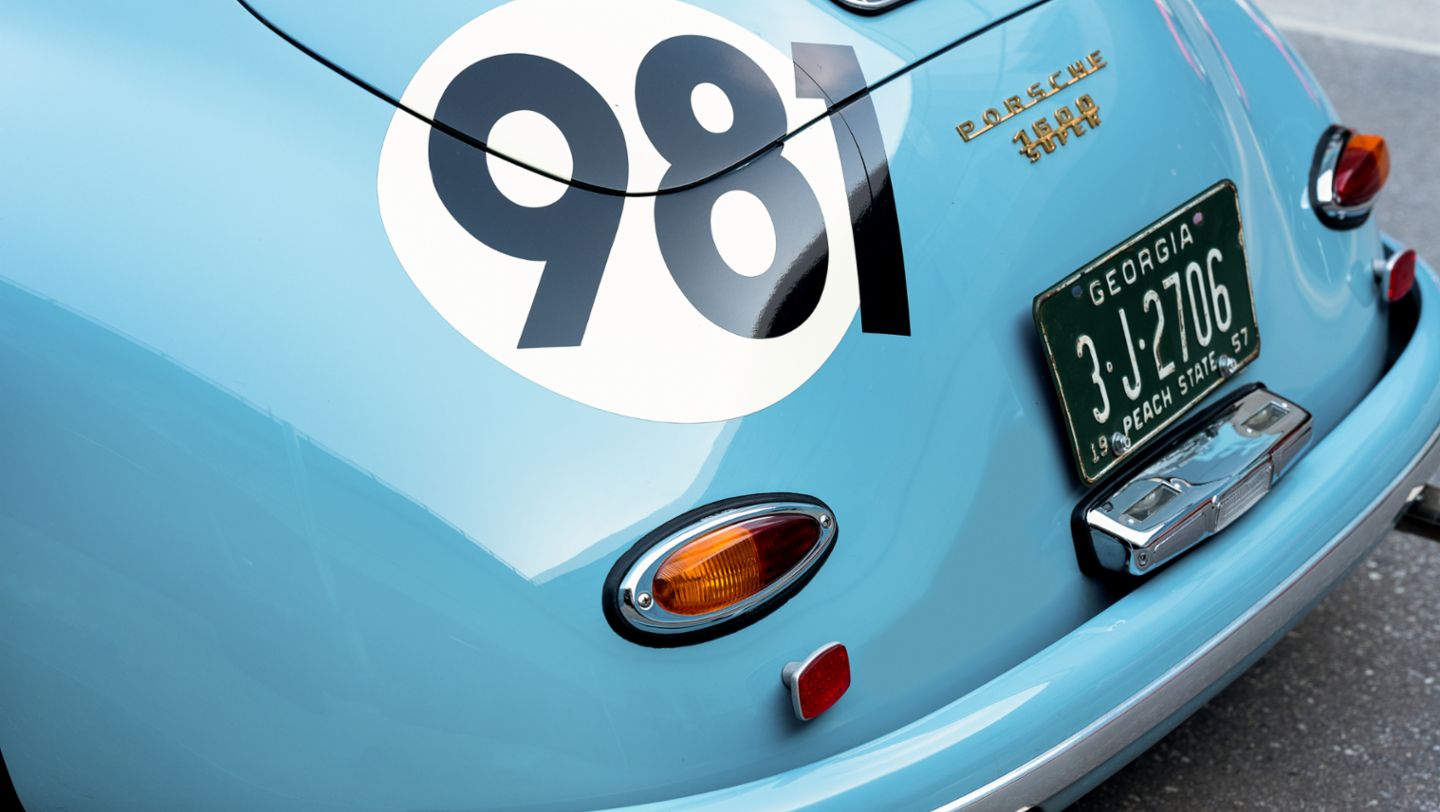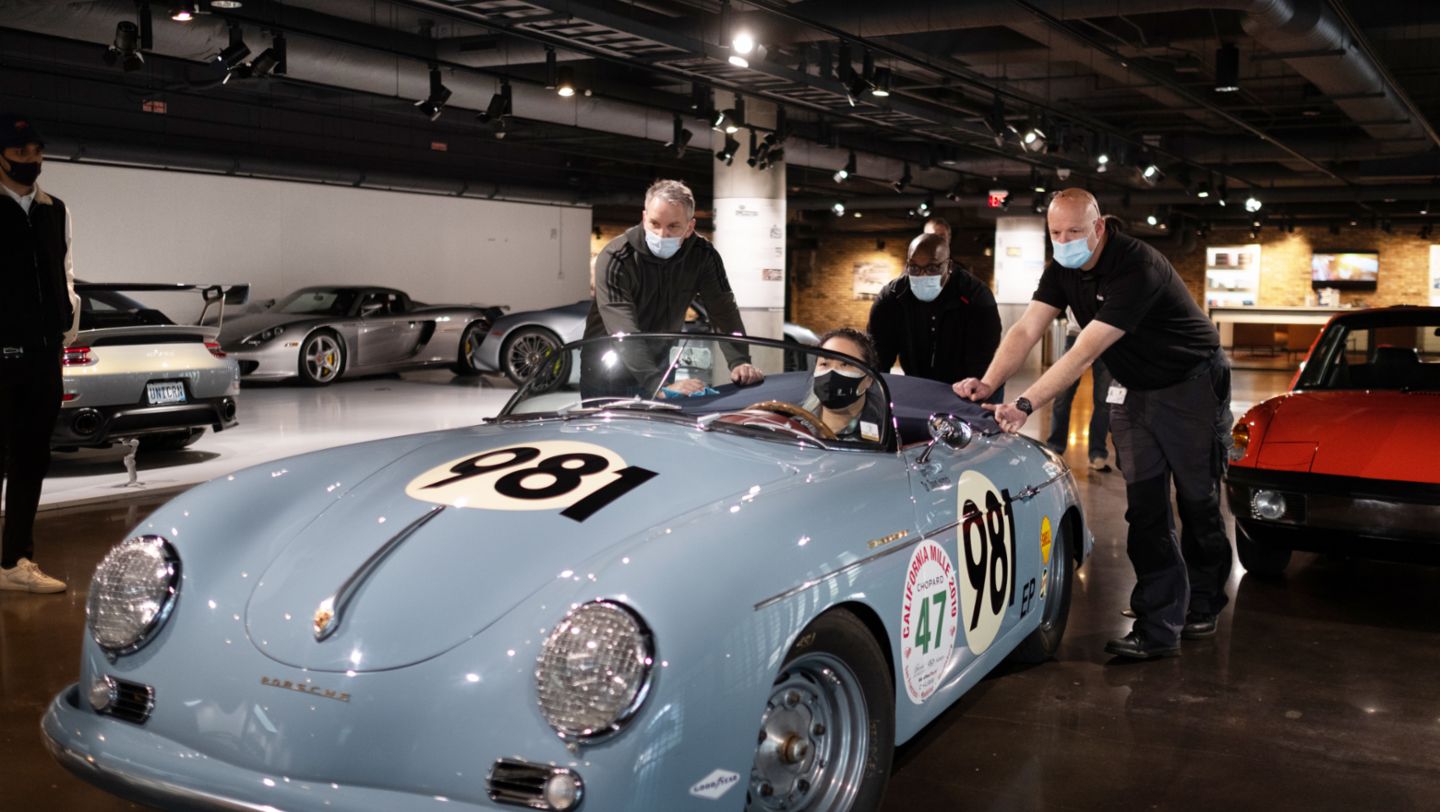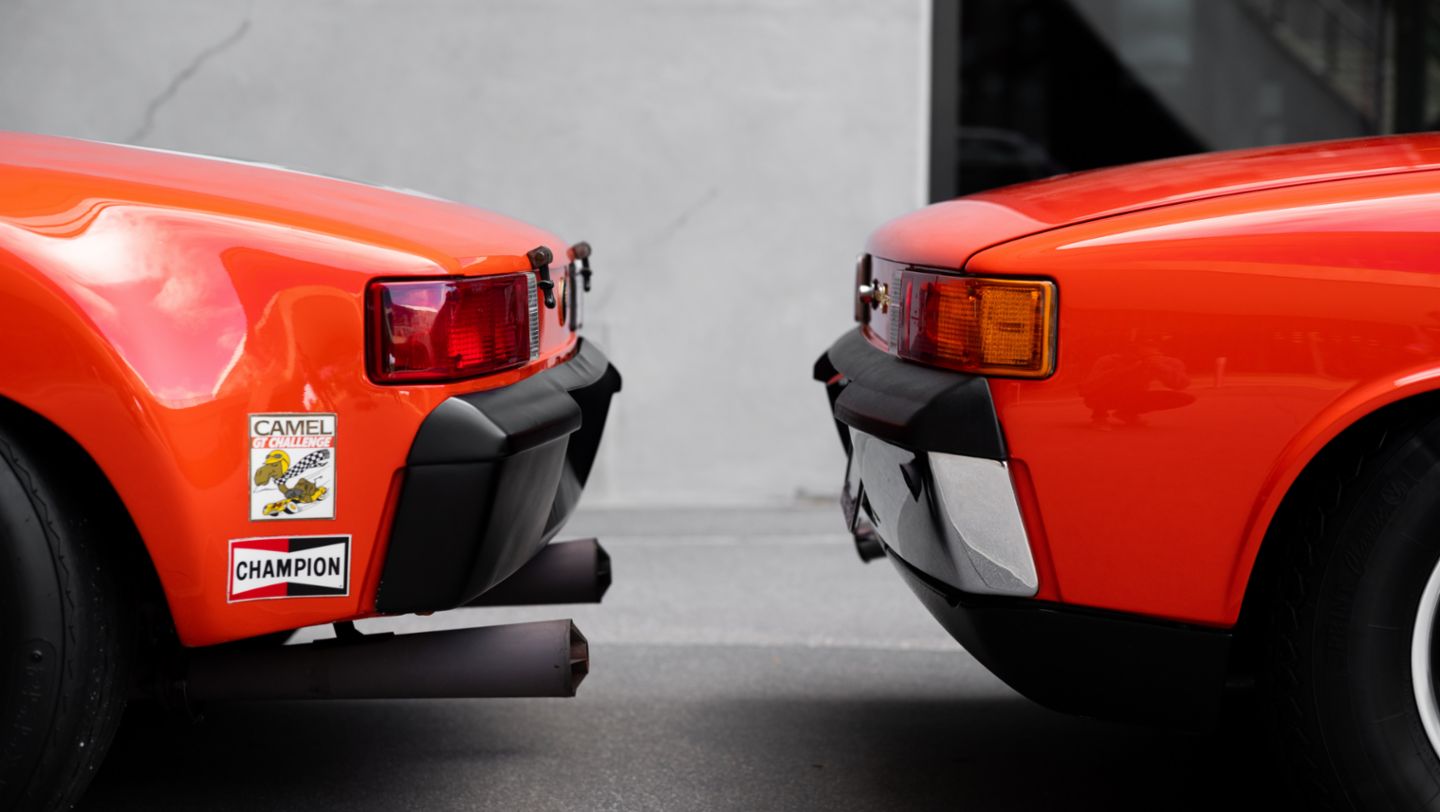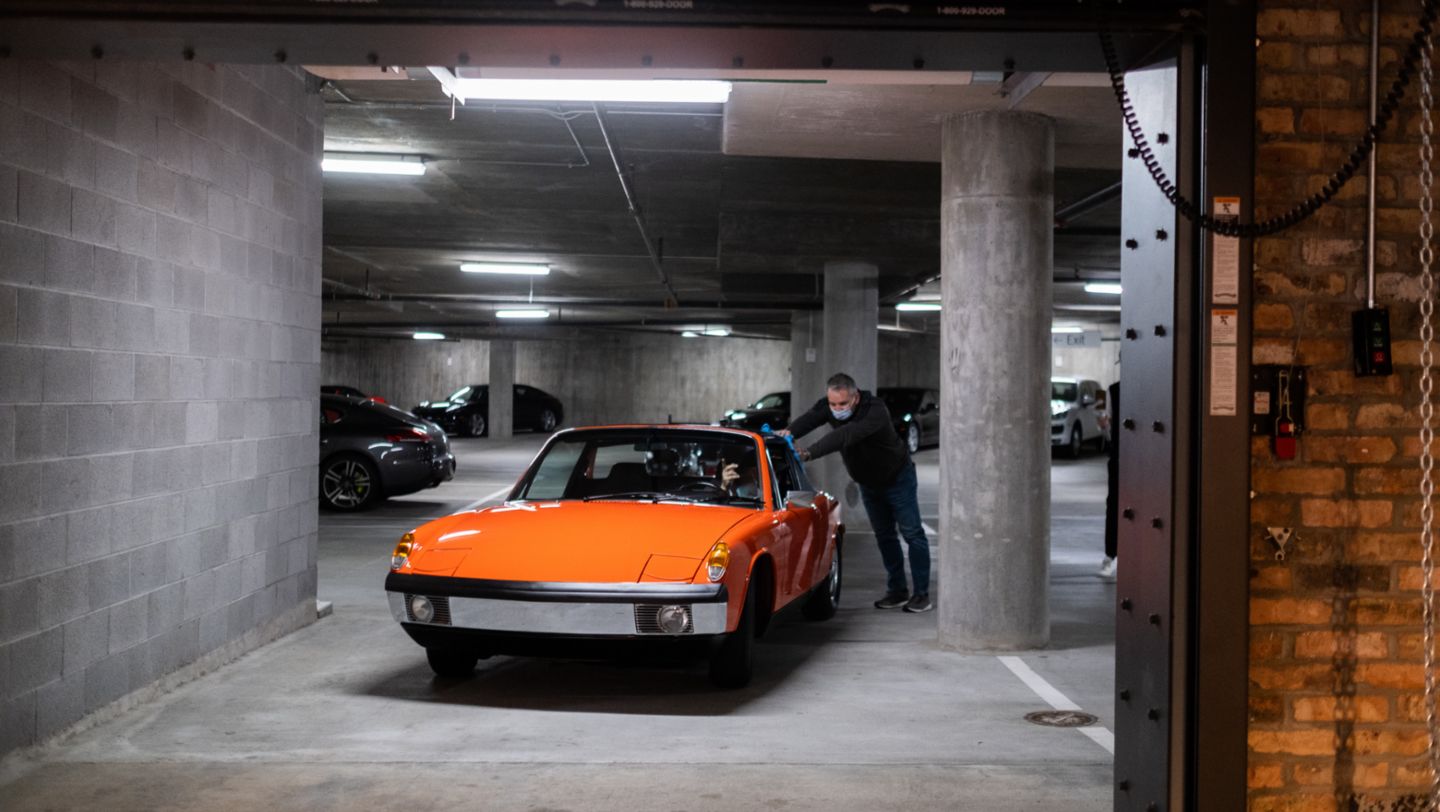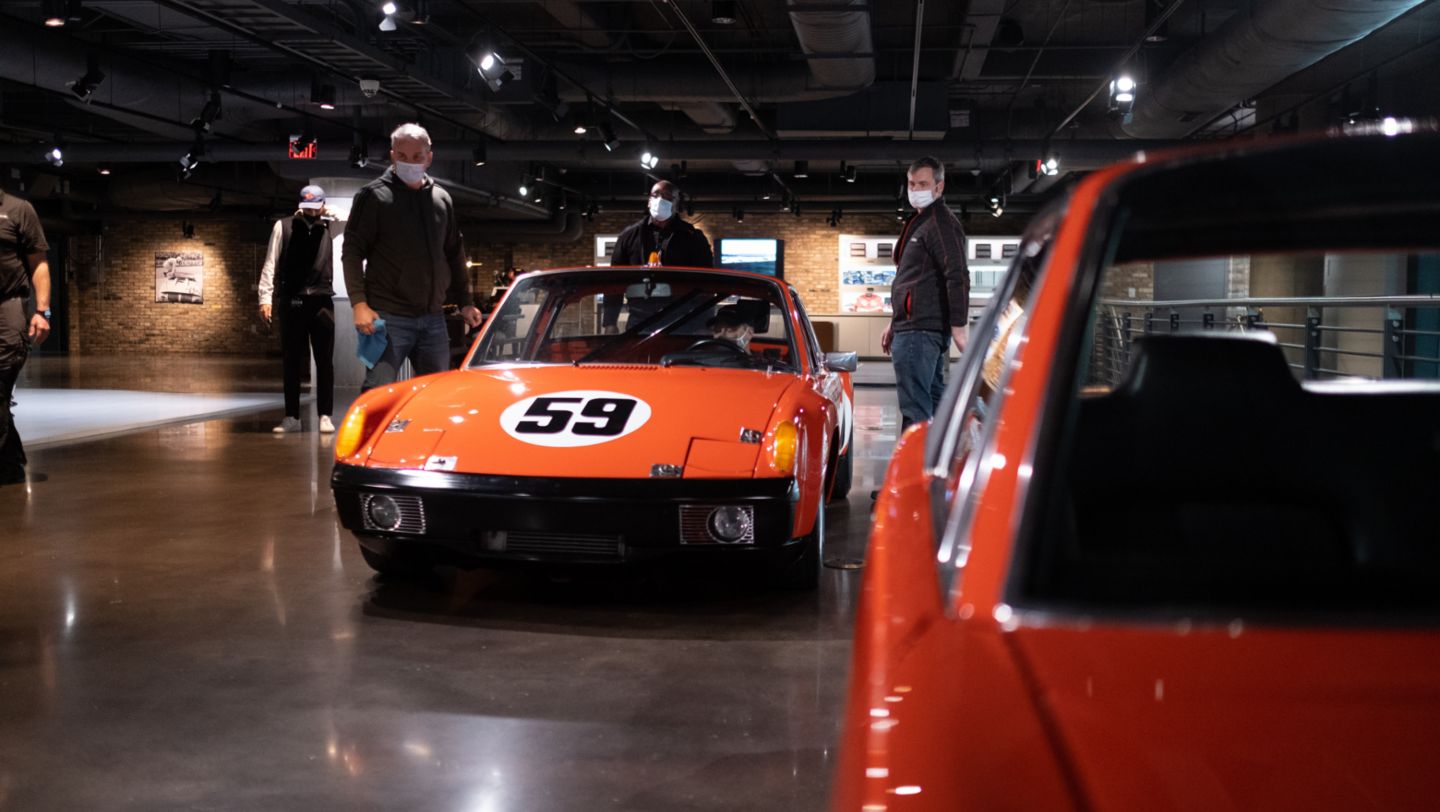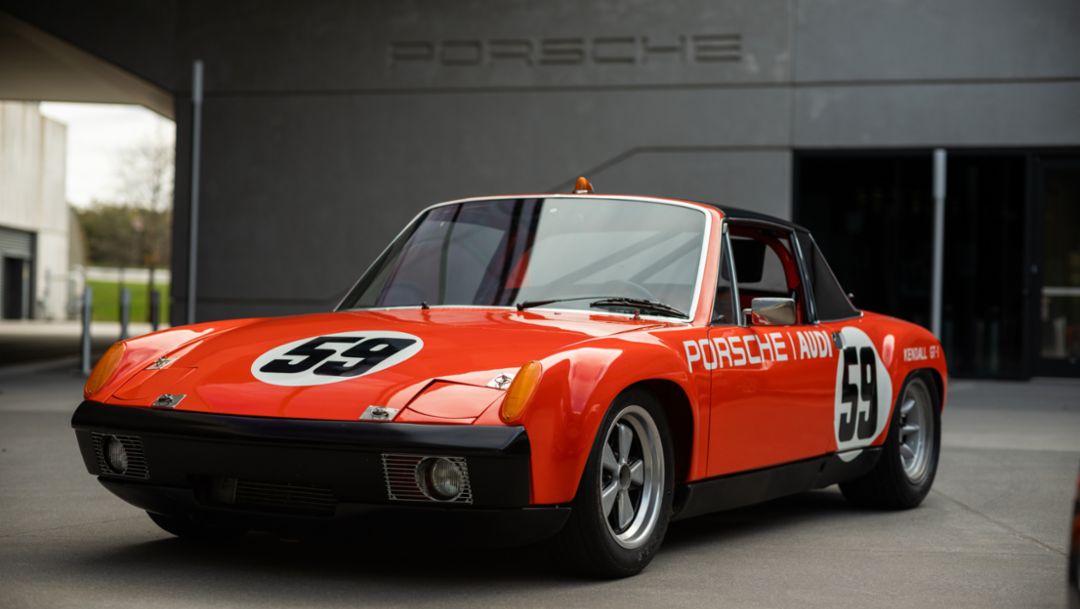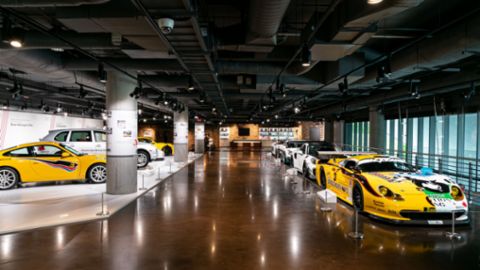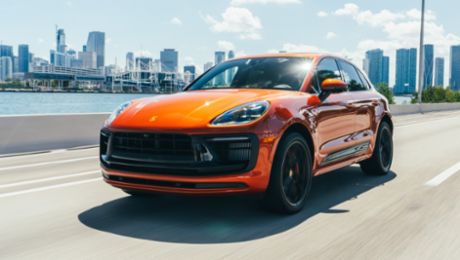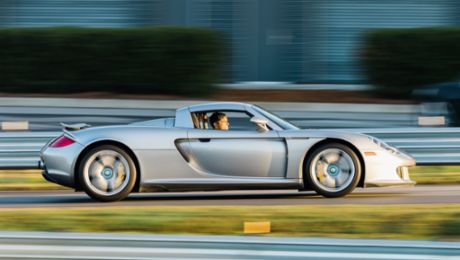Porsche motorsport history dates back to the very beginning of the brand. Less than one week from rolling out the doors, the first Porsche was competing in a local hill climb event. The winning tradition of racing strengthening the road car had begun. With an exhibit of legendary vehicles, the Heritage Gallery at the Porsche Experience Center Atlanta invites visitors to discover how Porsche is “Rooted in Racing.”
The cars on display range from historic race winners to road-legal modern classics that have pushed the boundaries of technology and performance. Decades of development have seen Porsche drivers reach the top of the podium more than 30,000 times, and many of those engineering leaps are the very same ones that make a Porsche so unmistakable to drive on the street. Spanning from the early years of Porsche motorsport in the 1950s to present day where the all-electric Taycan benefits from lessons learned at the 24 Hours of Le Mans, history is on display throughout “Rooted in Racing.”
Interested visitors can view the latest Heritage Gallery display at the Porsche Experience Center Atlanta. Guests are encouraged to book a tour of the facility at porschedriving.com.
1964 Porsche 911
Nothing short of a milestone: the Heritage Gallery is proud to present the first 911 to win a major international circuit race. One of the first 911 sports cars sent to the U.S., it arrived in December 1964 to be used as a demonstrator at Brumos Porsche of Jacksonville, Florida. A VW dealer from Atlanta, Jack Ryan, bought the 911, chassis number 300-128, the following year. He then proceeded to enter it into the 1966 24 Hours of Daytona – much to the dismay of Porsche in Germany who worried if the car was ready and pushed the on-site factory race director, Huschke von Hanstein, to make Ryan withdraw his entry. The reply: “It’s my car now and I’m entering it.” His confidence paid off. 24 hours and 548 laps later, the 911 secured not only first place in the 2.0-liter class, but also its own place in Porsche legacy.
Vehicle provided courtesy of the Revs Institute.
2019 Porsche 935-19
Closely related to the road-legal 911 GT2 RS it is based upon, the Porsche 935-19 is a single-seat race car built in a limited number of 77 units worldwide. At its heart, the 935-19 is a Porsche 911 GT2 RS Clubsport with bodywork visually reminiscent of the legendary Porsche 935 GT prototypes of the late 1970s and early 1980s. Porsche unveiled the new 935 race car on the occasion of “Rennsport Reunion VI” at WeatherTech Raceway Laguna Seca in California. “This spectacular car is a birthday present from Porsche Motorsport to fans all over the world,” said Dr. Frank-Steffen Walliser, Vice President Motorsport and GT Cars for Porsche AG at the time of its launch. “Because the car isn’t homologated for any series, engineers and designers didn’t have to follow the usual rules and thus had freedom in the development.” However, in the summer of 2020, noted Porsche collector Bob Ingram hatched a plan to enter his new 935 at the Pikes Peak International Hill Climb with 8-time Champion Jeff Zwart behind the wheel. With a time of 9:43.921, Zwart’s effort was good for second in class and fifth-place overall – having set the fastest time of the day in the fourth and final sector of the course. And proving once again that all Porsche models are indeed rooted in racing.
Vehicle provided courtesy of the Ingram Collection.
2018 Porsche 911 GT2 RS
The fastest and most powerful street-legal 911 model ever: The 2018 Porsche 911 GT2 RS celebrated its official world premiere at the Goodwood Festival of Speed in the U.K. in the summer of 2017. At the heart of this high-performance sports car is a 700-horsepower twin-turbo flat-six engine. Weighing in at 3,241 pounds with a full tank of fuel, the lightweight two-seater accelerates from 0-60 mph in 2.7 seconds and can reach a top track speed of 211 mph.
This particular 911 GT2 RS is an extremely unique example of an already special car. Crafted to custom factory specifications through Porsche Exclusive Manufaktur and finished in Chromaflair Urban Bamboo paint with over 38 individual lines of exclusive options, it made the dream of a lifetime come true when it was delivered to its owner at the Porsche Experience Center Atlanta.
Porsche 911 GT2 RS provided courtesy of the Serafino Collection.
2015 Porsche 918 Spyder
The 918 Spyder represented the pinnacle of Porsche's lineup of plug-in hybrid vehicles when it was launched. Its engine stems from the LMP2 RS Spyder race car, while the hybrid drive was developed based on experience gained from the successful 911 GT3 R Hybrid race car and Porsche hybrid production vehicles. This is proof that Porsche's extensive involvement in motor racing is not only a vital ingredient that furthers the manufacturer's road cars' performance, but also a valuable proving ground for efficiency-boosting technologies of the future.
More than any of its predecessors, the 918 Spyder provided key impetus for new technologies aimed at future vehicle concepts. By pairing the race-bred 4.6-liter V8 engine mounted in front of the rear axle that revs up to 9,150 rpm with two electric motors - one at each axle – the 918 Spyder generates a total of 987 hp. Accelerating from 0 to 60 mph in just 2.5 seconds, reaching a top track speed of 214 miles per hour and lapping the famed Nürburgring Nordschleife race track in 6 minutes and 57 seconds, the 918 Spyder combined unparalleled performance and handling with 21st century sustainability. It is capable of travelling up to 93 miles per hour purely on electric power and yields an EPA rated 67 MPGe.
At the end of 2013, the Porsche factory in Stuttgart-Zuffenhausen delivered the first of the 918 Spyder production models, laying a foundation for a new legend.
2004 Porsche Carrera GT
The Carrera GT concept began with the unrivaled technical basis of a pure racing car: the long-secret Porsche LMP2000. This Le Mans prototype, never used in a race and called the 9R3 internally, was completed in 1998 and had a V10 engine. The racing car's chassis was made of carbon fiber.
When the decision was made not to return to Le Mans for the time being, the idea instead came about to shake up the sports car world with the best technical highlights of the 9R3. This was followed by the development of the concept car presented at the Mondial de l’Automobile in Paris and, ultimately, the standard-production version which made its debut at the 2003 Geneva International Motor Show. In numbers, the V10 accelerates the Carrera GT car to 60 mph in just 3.9 seconds. The gearshift is extremely precise; the high-placed laminated beech wood gear knob fits perfectly in the hand – a superb detail from the early days of motorsport and a subtle nod to the fact that this is still a racing car at its core, despite being road legal. And it is precisely this that makes Porsche Carrera GT fascinating beyond compare.
The Carrera GT on display for Rooted in Racing is used to train U.S. technicians and has been dis-and reassembled almost 80 times.
2016 Porsche 919 Hybrid
After taking the overall victory at Le Mans in 1998, Porsche announced its retirement from the World Sportscar Championship and the top classes in the world’s most famous endurance race. For the next 16 years, Porsche continued to focus on highly competitive GT racing in various series around the world, which also provided valuable input for road car development, such as on the 911 GT3 models. In 2014, however, the time was ripe for a comeback at the highest echelon of endurance racing. The Weissach engineers developed the 919 Hybrid: the most complex racing car in Porsche history, boasting approx. 1,000 hp and weighing in at 1,918 lbs. The rear axle was powered by a two-liter four-cylinder turbo engine with 600 hp and the front axle by two electric motors. The battery was charged by energy recovery from the brakes and a turbine wheel in the exhaust gas flow – only Porsche took this route among the series competitors. The brand new technological marvel arrived at Le Mans for its first championship year in 2014 and, at the end of the season, chalked up its first victory. In 2015 and 2016, Audi, Porsche, and Toyota fought it out tooth and nail for the world championship season and the crown of Le Mans. In both years, the 919 Hybrid came out victorious. With the hat trick at Le Mans and a further, highly successful world championship season under its belt, the 919 Hybrid retired from active service in 2017.
The model on display represents the 2016 model of the 919 Hybrid.
2021 Taycan 4S
The Taycan is the first fully electric production vehicle with an 800-volt architecture instead of the more common 400 volts. The technology with which Porsche won the 24 Hours of Le Mans in the 919 Hybrid from 2015-2017 has now made the leap into series production. Charging times are among the main challenges of high-performance vehicles with a purely electric drive, but a system voltage of 800 - double that of conventional systems - is an innovative solution from Porsche to meet the high charging and drive power requirements. The result is that the Taycan can charge its battery from 5 % to 80 % in as little as 22.5 minutes. This pioneering four-door sports sedan is a unique package, offering characteristic Porsche performance and connectivity with everyday suitable range and usability. At the same time, highly advanced production methods and the features of the Taycan are setting new standards in the fields of sustainability and digitalization. With a total of 27 new developments, 13 of them being world firsts, the Taycan was declared the most innovative car in the world in 2020 by the Center of Automotive Management.
1957 Porsche 356 Speedster
In 1954, Porsche made its second attempt at conquering the racetrack, especially on the West coast of the U.S., with the 356 Speedster. The 356 America Roadster of the previous year had the pace to outperform the Austin-Healeys and Jaguar. But with an aluminum body hammered out by hand it was far too expensive.
A second attempt was therefore made. This super-light Porsche was called the Speedster, and this time it was a winner. The open steel body with its small, removable windscreen, the side window inserts and the flat fabric hood was a hit above all with young hot shoes. And who needed heating, upholstered seats and a glove box when it was all about fun and speed? With up to 105 hp, the little Porsche achieved a solid 124 miles per hour. The Speedster became a cult car – and at $2,995 it was more affordable than the British competition. By 1958, Porsche had built the 356 and the 356 A in Speedster versions, and by 1959, the last units were in the showrooms.
The 356 Speedster presented for “Rooted in Racing” has a solid racing background indeed. In the late 1960s and 1970s, two notable racing drivers - who would both go on to win their classes at Daytona, Sebring and Le Mans - began their careers behind the wheel of chassis #83901: Dr. David Helmick and John O’Steen. In total, chassis #83901 would compete in 23 seasons of Sports Car Club of America (SCCA) racing, making 18 appearances in the SCCA’s National Championship Runoff races, ultimately earning top honors in the E Production National Championship of 1981. Presented today in typical late 1950’s race configuration, Speedster #83901 enjoys both vintage race outings as well as road rallies with its two enthusiastic driver owners.
Vehicle provided courtesy of the Calfo Collection.
1968 Porsche 911 L Rally Kit/Sport Kit II
After the introduction of the 911, Porsche racing engineers set-out to build customer cars to suit different group regulations for the world governing body of motorsport, the Fédération Internationale de l'Automobile (FIA), and dedicated drivers could purchase and enter their own “production” 911 sports cars in competition. This 1968 Porsche 911 L with Rally Kit/Sport Kit II, of which only 28 were built to this specification, is a great example from the early days of the 911.
With the Rally kit option, customers who read the factory bulletin entitled Information Regarding Porsche Vehicles Used for Sports Purposes gained the recommendations necessary for specifying the new 911 of their racing dreams. Here in the United States in the late 1960s, this meant the door was open to the Sports Car Club of America’s (SCCA) popular Trans-Am series - which catered to both domestic muscle cars and small displacement European machines that complied with the FIA’s Group 2 category for Touring Cars. Thanks to its 2+2 interior dimensions, the SCCA classified the 911 as a “sedan” and welcomed it into their under 2.0-liter category.
The 1968 Porsche 911 L with Rally Kit/Sport Kit II on display was originally ordered by SCCA Champion John Kelly who intended to race it extensively. However, John raced it only once, taking an SCCA class win, and was then promptly offered a contract driving for another brand. Nevertheless, Kelly kept the 911 L in its numbers-matching original state, enjoying it occasionally on the street during his almost 40 years of ownership. Today, you can still see its original tech sticker on the roll bar from that single win – just one of the many that the 911 L with Rally Kit option would earn before the SCCA reclassified the 911 “sedan” as a GT Coupe.
Vehicle on display courtesy of the Ingram Collection.
1971 Porsche 914/6 GT and 1970 Porsche 914/6
As in the first Porsche 356 No. 1, in the 550 Spyder and in many Porsche racing cars, the engine of the Porsche 914 launched in the fall of 1969 was located between the rear wall of the passenger compartment and the rear axle. The mid-engine sports car with the removable Targa roof was a joint project between Porsche and Volkswagen, although the Development Center in Weissach was responsible for the design. By the end of the model line in spring 1976, Porsche had built the 914 with a choice of four engines, and the most powerful was the six-cylinder flat engine of the 911 T with 110 hp. The 914/6 went from 0 to 60 mph in just under ten seconds. A top speed of 125 mph was an impressive figure in the early seventies. Disc brakes at the front, elegant, sport Fuchs rims and the ignition lock on the left of the steering wheel lent the 914/6 even greater Porsche character. When production ceased in 1971 though, just 3,338 units had been built.
The 914/6 presented within "Rooted In Racing" was completed in May of 1970 with European delivery equipment for sale in Finland. It soon found its way to the United States where it spent most of its life in the Arizona area until being acquired by its current owner.
A small number of 914/6 GT models were constructed for racing use in the early 1970s, and they would come to dominate the 2-liter scene. The 914/6 GT scored significant class victories at Le Mans, Nürburgring and Daytona while the famous #59 presented here scored the first-ever IMSA Camel GT victory exactly 50 years ago, driven by the dynamic duo of Brumos Racing®, Peter Gregg and Hurley Haywood.
Displayed side-by-side in Ferry Porsche’s favorite Tangerine color, the similarities and differences beautifully illustrates just how “rooted in racing” Porsche vehicles truly are.
1970 Porsche 914/6 provided courtesy of Susan & Henry Wilkinson.
1971 Porsche 914/6 GT provided courtesy of The Brumos® Collection.
